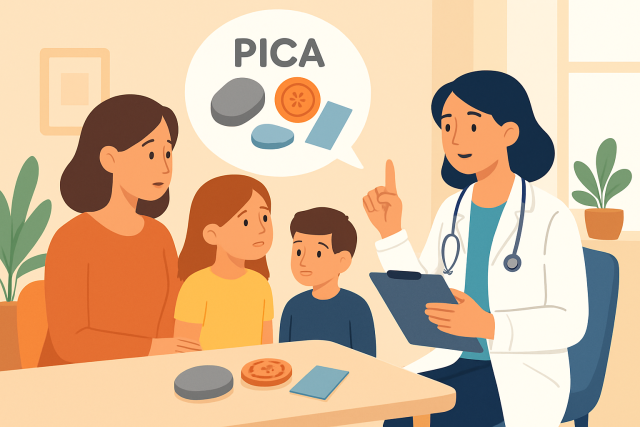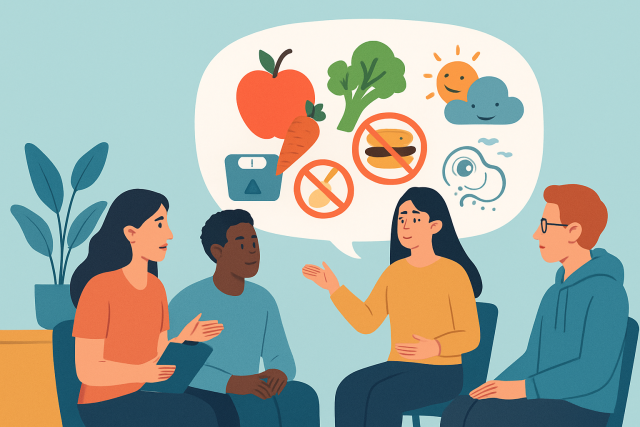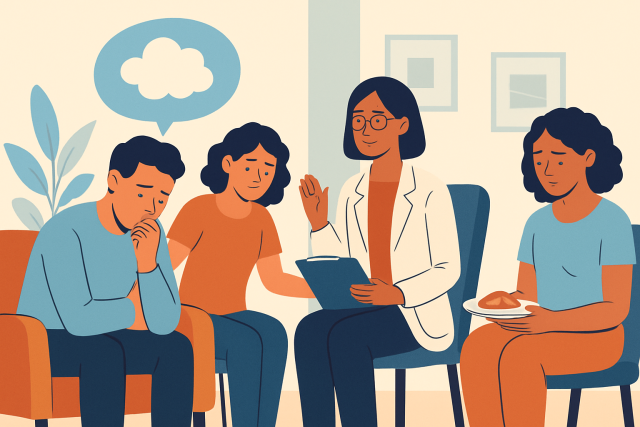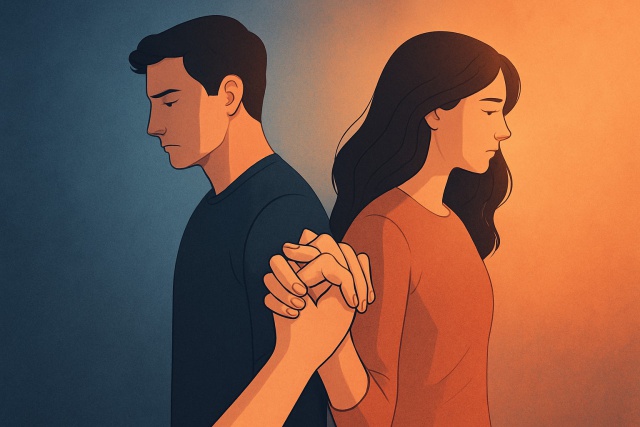
What Is Pica Disorder and Why Do People Eat Non-Food Items
Pica disorder involves the persistent eating of non-food substances. Learn what causes this conditio...
Many individuals often picture anorexia nervosa as extreme thinness and dangerously low body weight, but can you be overweight and anorexic? As it turns out, the reality is more tangled than that. Anorexia can show up in surprising ways and sometimes affect people who are overweight or have a normal weight but still display the core behaviors and mindset tied to the disorder. To really get a grip on these less typical cases, it is key to focus on clear definitions and symptoms and remember that body weight alone doesn’t tell the whole story.
Anorexia nervosa is a serious eating disorder characterized by extremely limited food intake and an intense fear of gaining weight. It also involves a distorted perception of one’s own body and behaviors that dramatically cut down on eating leading to significant health risks.
Anorexia nervosa has long been pegged to very low body weight, typically measured by a body mass index (BMI) falling below a certain cutoff. Losing weight is the classic red flag, but focusing too narrowly on that can overlook individuals who exhibit anorexic behaviors while maintaining a higher weight.
Many people think of anorexia nervosa as simply being extremely thin but that is just scratching the surface. Weight is one piece of a bigger and often messier puzzle involving psychological battles, a warped self-image and dangerous eating habits. If we only focus on obvious thinness, we overlook those who stay at a higher weight due to genetics, past weight or metabolism but still struggle with anorexic symptoms and face serious health risks.
"Anorexia nervosa is, at its core, a mental health condition that tends to show up in the body—though it’s so much more than just being underweight. The tougher part isn’t really the number on the scale, but the tangled web of thoughts and behaviors that come along with it." – Dr. Megan Stern, Clinical Psychologist specializing in Eating Disorders
This broader outlook has given rise to the term atypical anorexia nervosa. It refers to individuals who practice restrictive eating, wrestle with the fear of gaining weight and feel unhappy with their bodies but don’t fit neatly into the classic low-weight category.
Atypical anorexia nervosa is listed under the DSM-5 umbrella of Other Specified Feeding or Eating Disorders (OSFED). Unlike the more familiar classic anorexia nervosa this one doesn’t insist that the person be underweight. Instead the diagnosis focuses on the psychological turmoil, strict eating behaviors and an intense fear of gaining weight.
People with atypical anorexia often weigh more but still face many of the same serious medical issues as those with classic anorexia. The risks to heart health and bone density as well as hormone levels and mental wellbeing can be just as tough or more subtle to spot. Atypical anorexia calls for prompt medical attention and treatment plans carefully tailored to address both the eating disorder and the unique challenges that come with body weight.
People who start carrying extra weight often slip into restrictive eating habits to shed pounds or reshape their bodies. Even if they never become underweight, these strict behaviors combined with a persistent fear of gaining weight and a skewed body image can still fit the bill for anorexia nervosa. This pattern usually arises from cycling through diets or the heavy weight of social stigma around size. Sometimes deeper psychological issues also nudge disordered eating while living in an overweight or obese body.
Biological factors such as genetics, metabolism and hormones don’t act alone. They weave together with psychological challenges like anxiety or perfectionism and social pressures including weight bias or discrimination. All of these elements combine to form eating disorder patterns that are anything but straightforward and definitely don’t fit neatly into simple weight categories.
| Feature | Typical Anorexia Nervosa | Atypical Anorexia Nervosa |
|---|---|---|
| Weight Status | Underweight (BMI usually below 17.5) | Normal weight or even overweight, despite having dropped a significant amount of weight—quite the paradox |
| Behavioral Characteristics | Strict calorie restriction paired with an intense fear of putting on weight | Similar restrictive eating habits and fears, often kicking in after a noticeable weight loss, no matter the starting point |
| Body Image | A distorted sense of being overweight, even when looking very thin to others | Distorted body image and persistent dissatisfaction, even when not underweight—proof that perception can be tricky |
| Physical Symptoms | Fatigue, dizziness, missed periods, and low blood pressure—a real cocktail of warning signs | Physical risks mirror those of typical anorexia; sometimes the signs fly under the radar but are just as serious |
| Treatment Considerations | Nutritional rehabilitation, therapy, and close medical monitoring to bring back balance | The same treatment approach as typical anorexia applies, with some extra emphasis on body acceptance and tackling weight stigma, because that can be a tough nut to crack |
Spotting anorexia in people who don’t look underweight often means paying close attention to their thoughts and behaviors—because relying on appearances alone just doesn’t cut it. Catching it early can truly make a world of difference, helping to sidestep serious health issues.
Treatment for atypical anorexia nervosa generally sticks to the same core principles as typical anorexia but with a bit more nuance. It zeroes in on psychological therapy to gently unpack those tangled thoughts and emotions underneath the surface, alongside nutritional support aimed at gradually rebuilding healthier eating habits. Medical oversight also plays a key role, keeping a close eye on the person’s physical health so nothing sneaks up unexpectedly. The approach is carefully tailored to the individual’s current weight and thoughtfully considers the stigma that often comes hand-in-hand with being overweight.
One of the stickiest issues clinicians often stumble upon with atypical anorexia is weight bias. Because the person doesn’t match the typical profile, their struggles can be underestimated or brushed off entirely, leading to delays in key treatment.
Sometimes, it’s the oddballs—the atypical cases—that teach us the most. Grasping these exceptions isn’t just a nice-to-have; it’s absolutely key for a well-rounded perspective.
Raising awareness about atypical anorexia nervosa is key to make sure people don’t get misdiagnosed or turned away from treatment simply because of their weight. It broadens the definition of eating disorders, making it more accurate and inclusive
"Eating disorders like atypical anorexia are serious health issues that call for timely identification and compassionate, effective treatment—no matter a person’s body size. Every individual’s story matters and truly deserves to be heard and honored." – Dr. Alicia Morgan, Specialist in Clinical Nutrition and Eating Disorders
Misunderstandings about anorexia that focus only on weight - like questioning 'can you be overweight and anorexic?' - often fuel stigma and confusion. This makes the road to recovery feel like an uphill climb. Educating healthcare providers, families and communities goes a long way in building safe spaces where people feel comfortable reaching out for help.

Pica disorder involves the persistent eating of non-food substances. Learn what causes this conditio...

Explore the eight different types of eating disorders, understand their unique traits, and learn how...

Rumination eating disorder involves repeated regurgitation of food without nausea. Understand its si...

Contempt is a toxic emotion that can erode love and respect in relationships. Discover what contempt...